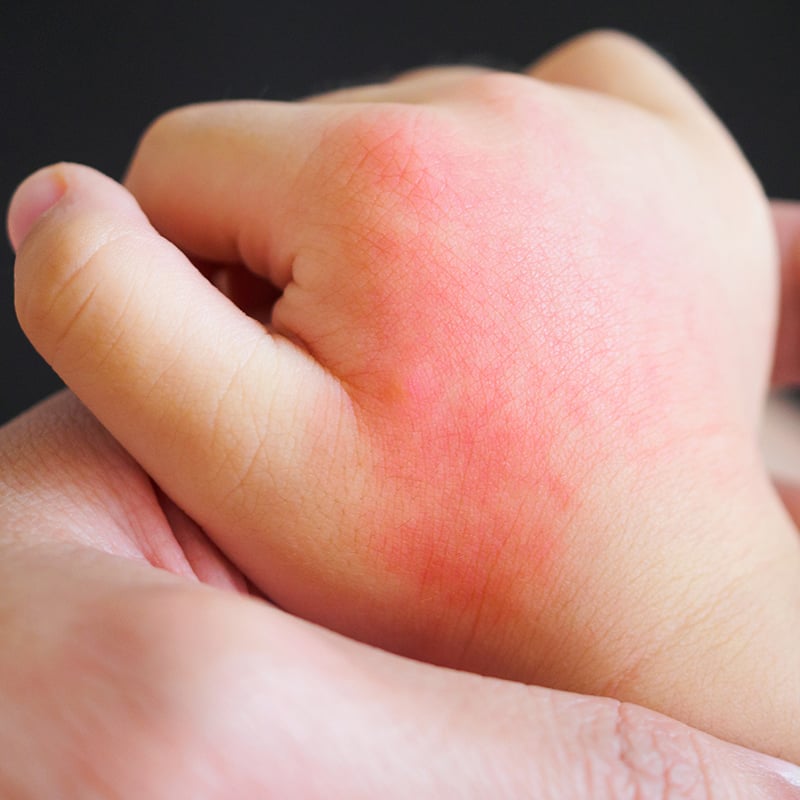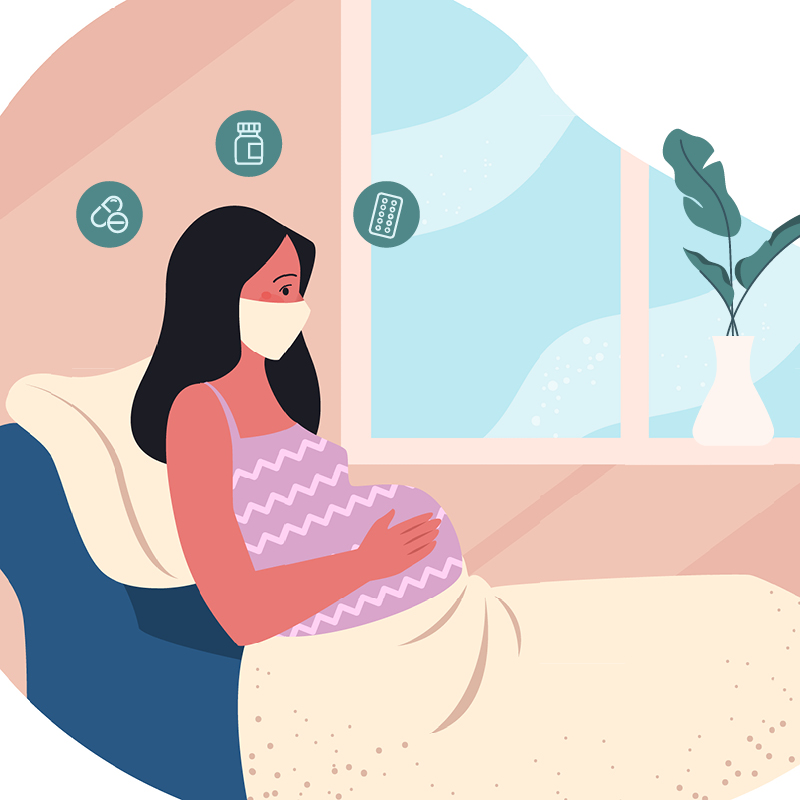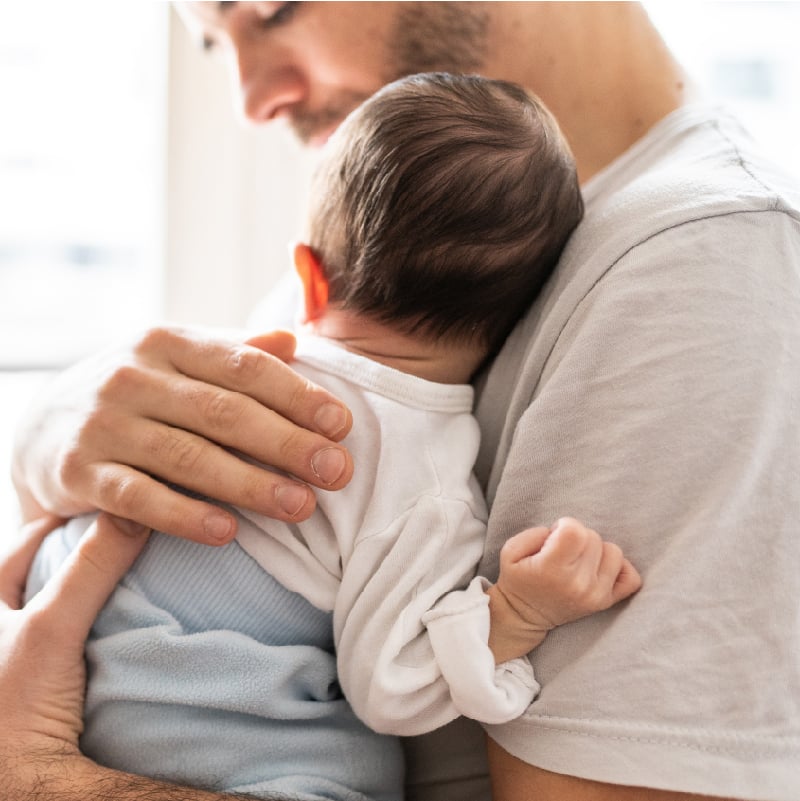Ensuring a newborn is able to get all the rest they need is very important to their growth. Just as important is keeping them safe while they sleep.
Both Rochester General Hospital and Unity Hospital are certified as Cribs For Kids National Safe Sleep Hospitals. Kristen Bennett, MD, is a pediatrician with Rochester Regional Health and has the expertise to help new parents give their babies a safe sleep environment.
What is safe sleep?
The simplest way to describe safe sleep is when a baby sleeps alone on their back while lying on a separate surface that is covered only with a fitted sheet.
Many hospitals use the ‘ABC’ acronym to describe this style of sleep for newborn babies:
- Alone
- Back
- Crib
The separate surface should be a firm & flat mattress and be free of toys, stuffed animals, or blankets. Crib bumpers should be removed, as well.
Safe sleep also means avoiding consistent use of swings, wedges, car seats and other inclined devices for infant sleeping. The Consumer Product Safety Commission has numerous warnings about infants who have died due to improper use of these types of products, including the Boppy Newborn Lounger. Any infant sleep product needs to meet federal safety standards for cribs, bassinets, play yards, and bedside sleepers.
What is SUID and SIDS?
The American Academy of Pediatrics centers all of their guidelines for safe sleep around the goal of reducing SUID and SIDS deaths. Sudden unexpected infant death (SUID) applies to the sudden and unexpected death of a baby under the age of 1 in which the cause was not obvious before investigation, according to the CDC.
Sudden Infant Death Syndrome (SIDS) deaths make up the vast majority of SUID cases. Approximately 3,500 infants die every year from SIDS – most of which are related to sleep.
Of the SIDS deaths in the United States, American Indian, Alaskan native, and Black babies are more than twice as likely to die of SIDS as compared to white babies, according to CDC data.
Ages for sleeping changes
Sleeping patterns for infants will shift quite a bit over the course of their first year. Newborn babies spend a majority of their days (and nights) sleeping – about 16 hours a day between naps and longer stretches of sleep.
Newborn to 6 months
There might be more frequent overnight feedings and wake up times. During those hours, all sleep should happen on a safe sleep surface.
6 to 12 months
At this point, babies should start to sleep in longer stretches overnight without feeding. This can be anywhere from 4 hours to 12 hours, depending on the baby. Each one is different.
Experts recommend that babies sleep in the same room as their parents or caregivers for at least the first 6 months – up to 12 months, if possible. This can be helpful with monitoring the baby’s patterns and make it easier for overnight feedings.
“As long as it is a separate and flat sleeping surface, infants can sleep in a bassinet, Pack ‘N Play, or even a crib if there is room in the parent’s bedroom,” Dr. Bennett said. “All of those are safe options.”
12-24 months
By this age, most infants and toddlers are sleeping in a crib or Pack ‘N Play. Since babies are stronger at this point in their development, security objects such as a blanket or a stuffed animal are generally okay.
The main safety concern at this age becomes if the child can get out of their crib and start to wander. This brings about an entirely separate discussion about transitioning to a toddler bed or a “big kid” bed. Talk with your pediatrician about this change if you’re starting to go through it.
Co-sleeping with infants
The safest way for infants to sleep is to be on a separate sleep surface from their parent or caregiver. Doctors with the American Academy of Pediatrics (AAP) strongly recommend against sleeping in bed with your baby, even with products marketed as in-bed sleepers.
Experts with the AAP say there is not enough information available right now on these kinds of products to be marketed as safe when it comes sleeping, saying they “cannot support bed-sharing under any circumstances.”
“At this time, we would still strongly recommend not to co-sleep,” Dr. Bennett said. “There are a number of different products available such as in-bed and bedside sleepers, but we do not have the research to support if those types of sleep surfaces are equivalent to a separate sleep surface in reducing risk of SIDS or accidental injury.”
Having a bassinet or crib next to the bed is both helpful and safe, especially for overnight feedings. This way, the baby can sense the closeness of the parent or caregiver through smell and sound.
Swaddling and pacifiers with sleeping infants
There are some practices that help soothe your baby as a newborn that may need to change as they grow older.
Swaddling, in which an infant is wrapped up in a large, thin blanket to help them feel secure, is a great method to calm a fussy baby through the first couple months of infancy.
Dr. Bennett suggests starting to transition away from swaddling at 2 months of age, as most infants will start to roll by 4 months of age. Having a swaddle blanket can be riskier in the sleep environment as they grow older.
Although the reasons why are not entirely clear, pacifiers have a reduced risk of SIDS associated with them. Parents and caregivers can use them at naptime and bedtime as a soothing measure.
“Parents frequently inquire if they can use pacifiers for their newborn infant, especially if breastfeeding” Dr. Bennett said. “In the first days of the newborn period where mom and baby are trying to establish a connection for breastfeeding, doctors will say to hold off on using pacifiers. However, once the latch and rhythm of breastfeeding are well established, pacifiers can be an effective and safe soothing technique.”








